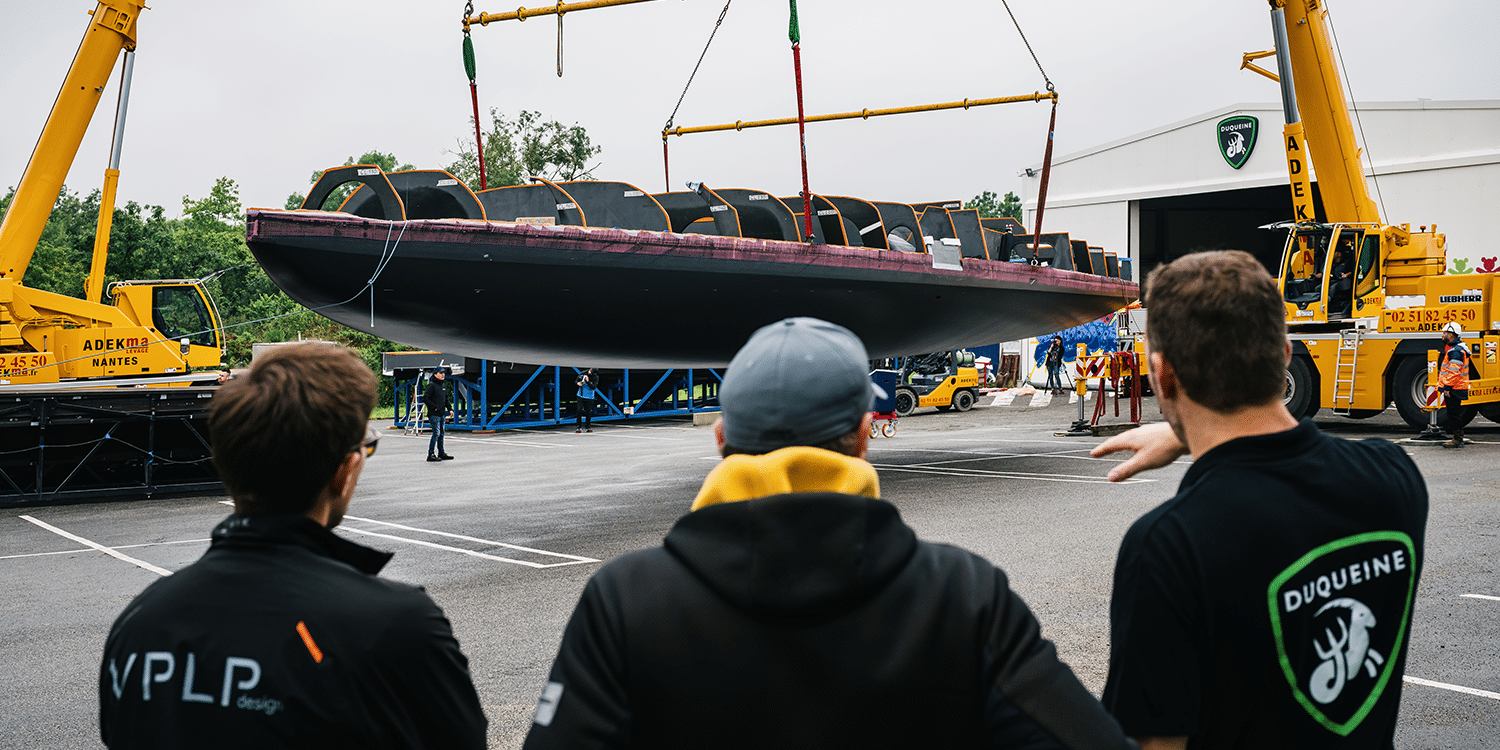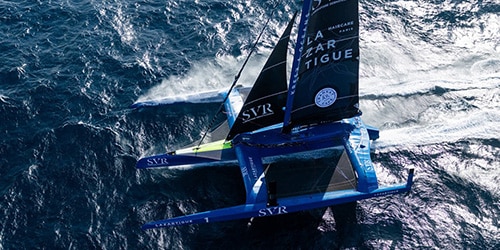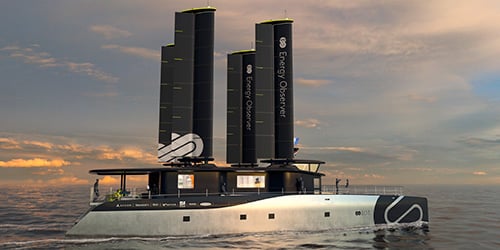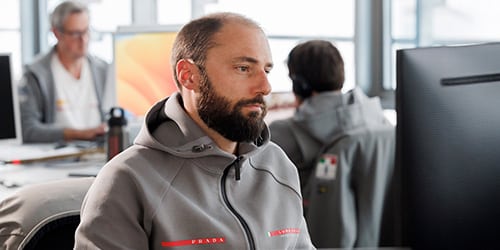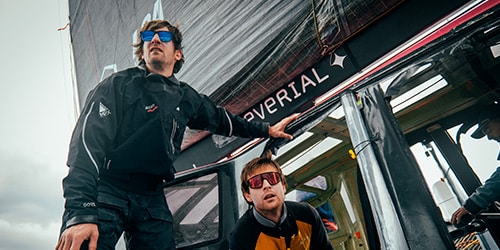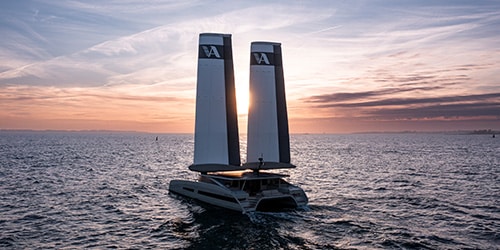The hull and the deck of Les P’tits Doudous have just come out of their moulds at the Duqueine Atlantique shipyard. To mark this important stage in the construction of Armel Tripon’s new IMOCA, Quentin Lucet, Partner Naval Architect at VPLP Design, and Katia Merle, structural engineer and ecodesign specialist, talk us through the firm’s collaboration with the Nantes-based skipper since 2021.
Can you tell us how your collaboration with Armel on this new IMOCA came about?
Quentin Lucet: We first met at the Airbus Technocentre in 2021. Armel had been in touch with the aircraft manufacturer which, following the COVID pandemic, had amassed a significant stock of carbon fibre which had exceeded its expiry date for use in the aerospace industry. But Armel’s motivation wasn’t to build an IMOCA on the cheap. From the outset the goal was to build a technically and ergonomically competitive boat with the smallest possible carbon footprint. The main avenues for achieving this reduced footprint involved choosing the right materials, of course, but also the right construction hardware. That’s why it was relevant to reuse the moulds created for Malizia Seaexplorer, given that their manufacture accounts for a considerable percentage of the carbon emissions produced by the construction of a racing boat. We allowed ourselves the time to work through an optimization process for the boat to adapt it to Armel’s needs, without touching the hull given that it had already proved itself on the water. The process took us nearly two years and in January 2023, we all said, “Go for it!” even if there were still some uncertainties in the budget…
What technical problems did the out-of-date carbon fibre cause, considering it wasn’t really designed to be used for offshore racing?
Quentin Lucet: The grade of the carbon fibre complied with IMOCA rules, although we had to adjust the pre-preg curing cycle because the resin was initially designed to polymerize at a temperature of 180 °C but the IMOCA rules only tolerated a maximum of 135 °C. Duqueine Atlantique invested heavily in the project [ed. note: the yard built a special hangar at their Malville site which was previously devoted to aviation] and they produced numerous samples that we were able to characterize and test. On the mechanical side of things, the tests were conclusive. It is worth highlighting the fact that Armel enjoyed the support of Team Malizia when it came to the design studies and the supervision of the works, which certainly facilitated things.
Katia Merle: It’s important to understand that the technical ambitions of this project far exceed the environmental requirements of the new IMOCA class rules [to be released in August] which focus primarily on the moulds and the waste generated by the manufacture of the foils. These items represent enormous gains in terms of sustainable design, without raising doubts about performance. Armel Tripon and Duqueine Atlantique really have taken a new direction and theirs is a pioneering project. Les P’tits Doudous will be a true prototype, in the literal sense of the word, with all the beauty and risks that that entails.
Was the boat built entirely from out-of-date carbon fibre?
Quentin Lucet: No, it was approximately 70%. Certain parts were made with new pre-preg, such as the mast bulkhead, but the vast majority of the carbon fabric came from Airbus’s out-of-date stock. The weights of the Airbus fabric were different from those used to build her sistership Malizia, so we had to recalculate quite a few pieces.
Armel announced that 70% of the build comprised out-of-date carbon fibre, achieving a 50% reduction in emissions. How do you calculate these figures?
Katia Merle: 70% of zero-impact pre-impregnated material doesn’t mean 70% of the total impact because many other parts need to be taken into account. Nevertheless these figures demonstrate that the pre-preg, when you take into account its manufacture and its use, in particular the question of the curing process and the consumables, remains very impactful.
Airbus’s out-of-date stock was an opportunity worth seizing, but does it mean that Les P’tits Doudous was a one-off or could it be done again?
Quentin Lucet: I don’t know if it can be done in the exact same way in the future, but it certainly gives out a strong signal. Stocks of out-of-date carbon fibre are not unusual in industry and the IMOCA class will be meeting Airbus in the near future to discuss how the two organizations can collaborate in the future. Numerous isolated schemes for collecting composite materials [out-of-date fibres, offcuts, rejects, etc.] are starting to appear and we need to stay alert.
Katia Merle: Prior to this project there clearly existed a technological barrier, including problems relating to curing temperatures and the compatibility of core materials and moulds with this carbon fibre from an unusual source… If Armel’s IMOCA turns out well and proves to be competitive in every respect, then these barriers can be considered lifted and that will give rise to many ideas. It will facilitate the interactions between the sailing world and the giants of industry, the latter being massive purchasers of composite materials.
